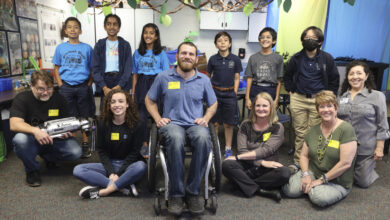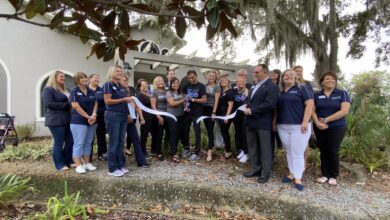Science is allowing us the opportunity to build healthier babies & bodies
Don’t drink. Don’t smoke. No caffeine. The list goes on and on of ways expecting mothers can potentially avoid health risks for their babies. But what if science provided a way to take it one step further, giving parents an option that could also potentially prevent genetic diseases and generational ailments from being passed down?
What if we could prevent our children from facing certain genetic diseases? Or save them from having to suffer from what your mother had and your mother’s mother had? What mother or father wouldn’t want to curtail or minimize probable suffering?
The idea behind Preimplantation Genetic Diagnosis (or PGD) refers to genetic profiling of embryos prior to implantation. Also called “embryo profiling,” this process is considered in a similar fashion to prenatal diagnosis. The main advantage of such a procedure, is that when used for screening genetic diseases, it aims to avoid selective pregnancy termination in that it makes it highly probable the baby will be free of disease under this consideration.
For instance, after more research and development, PGD could make it possible to remove undesirable diseases, disabilities and more before allowing the fetus to grow. If this genetic progress continues, we could essentially prevent children from being born with diseases, disabilities or other genetic syndromes.
The idea of science helping babies is not a new concept, but this particular method of help is still in it’s infancy. This means there are still many factors to consider and many test to be done. And although there is a level of concern, both ethically and physically, many physicians and scientists see a great benefit in identifying and eliminating disease and illness proactively.
“If we could have the ability to eradicate or diminish the prevalence of disease, this might be something that could reduce human suffering and markedly diminish the cost of medical care,” Dr. James Waldorf, Mayo Clinic.
And, as medicine would have it, in the plight to perfect PGD, additional preimplantation options have revealed themselves. Some would consider these other options quite controversial.
Controversial Designer Babies
Remember when the story of Dr. Frankenstein seemed outlandish? Or how the story of Pinocchio sounded absurdly unrealistic? Seriously, how on Earth could anyone expect people to believe that another human person could strategically build a child of their own?
Long gone are the days of simply hoping for a healthy baby with ten fingers and ten toes. Now, parents can hand pick little Susie’s hair color or decide how tall Johnny Jr. will be. As easily as it to choose furniture from an IKEA catalog, so too can parents choose the physical characteristics of their future baby.
It’s called “Designer Babies” this idea of hand-selecting features that will give a child the “edge” as they become adults. Think of it like a designer handbag or luxury car with all of the bells and whistles. Parents can “order” specific heights, hair and eye color or even potentially eliminate the predisposition for genetic ailments.
It all started with a new procedure founded for the purpose of In Vitro Fertilization (IVF). IVF is when an egg is fertilized with sperm outside of the body to achieve conception before being implanted into the uterus to grow. It is a process that was developed in order to give countless families who are struggling with trying to, or are not able to, conceive a child.
While working on this process, a technique of PGD evolved, and made useful the benefits mentioned above. This technique helps to avoid unsuccessful pregnancies, but with recent developments, can be used to customize the traits of a child.
Now, mommy can have her tall, blonde-haired beauty and daddy can have a strong, little defensive back. Sound absurd? Others would agree.
Designer babies are causing a stir ethically. Is it wrong? Are genetically modified children at an unfair advantage, as the procedure is costly? If a genetically modified child grows up to be an amazing athlete, is it the same as taking performance-enhancing drugs to outdo the competition? These are all questions that have surfaced around PGD and its kin, and in the midst of the controversy, the medical implications are not as popular.
Is there a social stigma? How would this process further aggravate discrimination? Imagine if the Paris Hiltons and Kim Kardashians of the world, those who could afford such an investment, took advantage of customizing perfect little cookie-cutter replicas of themselves. It would seemingly widen the gap between what being a real child is like, i.e., think back to when you were an awkwardly shaped, brace-faced juvenile, and the hollywood version of a nipped, tucked doll.
“I would hate to see us get to the point of picking physical characteristics, because I believe diversity is a necessary and beautiful thing,” says Dr. Waldorf.
Considered by some a miracle for mothers and by others, a “posthuman” experiment, the concept of “designer babies” comes with risks and factors that have not yet been determined. Although it sounds amazing, this idea of “wowing” your friends with your Louis Vuitton inspired baby, the fact remains that this medical advancement is no guarantee.
Build a Bladder Workshop
Polymer beads have become a craze amongst children. What starts out as a tiny, squishy little ball of jelly, when soaked in water, grows to form a large, colorful sphere. There isn’t much purpose in what it does, but it’s a great comparison to the concept of 3D medical printing.
Imagine a similar, but sterile goo, that, when squeezed out in to a petri dish, becomes a small hexagonal shaped product. Over a period of time, those small hexagons grow to a much larger sized hexagon that, when layered by scientist, will become someone’s liver or ear or bladder. And the list goes on from there.
3D printing is the practice of layering objects from a digital model using a process of laying down material in successive layers to form a shape. Basically, anything that can be transformed into a digital model can be 3D printed. Some of these include scaled-down skeletons of dinosaurs and ancient species, prosthetics for humans and animals, automotive parts and human organs and body parts.
Although 3D printed organs are not routine and in circulation yet, researchers at Cornell University created a human ear using a 3D printer that could be implanted on a person. Likewise, scientists from Organovo have successfully printed liver tissue that could one day become a functioning liver. For now, a 3D printed liver will not be introduced into the human body, but that doesn’t mean Organovo’s breakthrough is any less ground-breaking.
With the livers and liver cells Organovo scientist produce, extensive research can be done by implanting them with diseases in an effort to study them and see how medications work or if these medications are successful.
All “i”s on You
Everyone has heard about the infamous “i”s. There’s the iPhone, iPod, iHome and the list goes on. Now there is a new “i” making its debut – the iKnife.
The iKnife was developed by researchers at Imperial College London and is the next step in making cancer treatment procedures more efficient. This knife is not just a simple tool, rather, it is intelligent. The iKnife can detect, in three seconds time, cancerous tissues as it cuts.
Electrosurgical knives are used during electrosurgery, which uses a high-frequency electric current to cut, thicken, dehydrate, burn or destroy biological tissue. When electrosurgical knives are used, they vaporize the tissue. The iKnife analyzes the smoke left in the wake of the incision and compares it to a database of almost 3,000 “signatures” to detect cancerous tissue.
A common side effect of removing a cancerous tumors and tissue, has been that healthy tissue is also damaged. To the human eye, there is no difference. However, this not only results in the loss of healthy tissue, but could result in some cancerous tissue being missed, leading to more surgery or fatality. Now that the most prominent “iProduct” has surfaced, the iKnife, it’s technology can provide sight for medical professionals during these surgeries.
Advances in Ocala
Perhaps the most convenient place to look for advances in the medical field through technological marvels is in our own backyard. The Florida Institute for Human and Machine Cognition (IHMC) has a branch located on the Downtown Square.
IHMC and its researchers focus on technologies that influence and enhance human capabilities usually cognitive or physical. The idea is to combine human and machine systems in a way that emphasizes their respective strengths, while diminishing their respective weaknesses. The organization’s goals are to study human-centered, computing assistive technologies, whether it is through mobility, sensory or cognitive skills.
In fact, IHMC has been and is currently working on two revolutionary projects and Dr. John Rogacki, Associate Director, and Dr. Sharon Heise, Associate Director of Research, gave Ocala Magazine some insight.
IHMC is working in conjunction with the James A. Haley Veteran’s Hospital in Tampa, Fla., funding research for restoring and developing cognitive skills in wounded veterans. This is done via companion technology, which utilizes natural language processing. These system “companions,” as they have been coined, use human speech as an interface and work on models that assist in recognizing spoken words.
The major component of the system is the ability to have a companionship with the veteran, similar to human communication, using language understanding. The companion technology can even use an “avatar” to give them a face such as “Wigdog,” a cyber-companion in the form of a small dog wearing a wig. These companions, according to Dr. Heise, are meant to be “nonthreatening, assisting platforms to help in everyday tasks and could help redevelop cognitive skills.”
The implications of this research and technology are that not only would this be a great project for wounded vets, but it could also branch out to anyone who would need a companion (people with disabilities, for instance). Dr. Heise also claims that companion technology could assist in anyone from dementia patients to simple language training in the future.
The next project IHMC has under its belt is the development of exoskeletons, through a joint program with NASA. The exoskeleton is a robot that is worn over the body to assist with movement in the leg joints.
For NASA, it can be used as an exercise device for astronauts aboard the space station or it can be used to work on the surface of other planets. The exoskeleton has bigger implications on a smaller scale though with people working with the machine as a system, rehabilitation could become easier and even paraplegics could walk.
“Someday, they may be independent again,” said Dr. Rogacki. The idea is to use robots as teammates. Using sensory technology, the exoskeleton provides alternate perception. A mobile person can feel when their foot hits the ground, but tech in development for the exoskeleton uses sensation in the tongue and torso to let a paraplegic know their foot has made contact.
The next steps for IHMC include studying the psychology of it all to focus on what exactly it is that makes us, as human beings, trusting of the devices and robotic systems in our lives. How can we develop trust between robots and, consecutively, the humans they interact with? What kind of feedback do we need from robots? IHMC is also working on taking its natural language processing to medical literature, analyzing patient charts, documents and courses of treatments over decades to see how effective they have been.
Advances in the medical world are moving at such a pace that in the blink of an eye, any normal person could miss them even if they are in your own hometown. With the research and technology IHMC is developing, they will not only achieve medical and technological milestones, but also provide improvements to medical procedures and the field in general.
These breakthroughs are leading the way in science and changing our world. Dr. Rogacki’s words about the technologies at IHMC speak volumes – “They give people hope.”
3D Eats
3D printing is also putting its mark food. NASA provided Texas-based Systems and Materials Research with a grant to develop a 3D printer that could print food suitable for astronaut consumption. 3D printed food could also mean a solution for feeding the hungry throughout the country, and eventually, the world.
D printing is also putting its mark food. NASA provided Texas-based Systems and Materials Research with a grant to develop a 3D printer that could print food suitable for astronaut consumption. 3D printed food could also mean a solution for feeding the hungry throughout the country, and eventually, the world.
D printing is also putting its mark food. NASA provided Texas-based Systems and Materials Research with a grant to develop a 3D printer that could print food suitable for astronaut consumption. 3D printed food could also mean a solution for feeding the hungry throughout the country, and eventually, the world.






